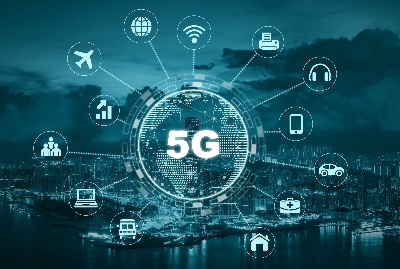
The 5G Core (5GC) represents a significant shift in telecommunications architecture, designed to support the high speeds, low latency, and massive connectivity envisioned for the fifth generation of mobile networks.
Unlike its predecessor, the Evolved Packet Core (EPC) of 4G, the 5GC is built around a service-based architecture (SBA) that emphasizes flexibility, scalability, and the ability to handle a wide range of applications and services, from enhanced mobile broadband to mission-critical communications and massive IoT devices.








### Key Features of 5G Core (5GC)
1. **Service-Based Architecture (SBA):**
– The 5GC is designed around a set of independent network functions (NFs) that communicate with each other using APIs over a common service-based interface. This approach allows for more flexible deployment, easier introduction of new services, and rapid adaptation to changing network conditions.
2. **Network Slicing:**
– 5GC allows for network slicing, a key feature that enables the creation of multiple virtual networks on a single physical infrastructure. Each slice can be customized to meet specific requirements for bandwidth, latency, and services, supporting various use cases such as smart cities, autonomous vehicles, or enhanced mobile broadband.
3. **Enhanced Latency and Reliability:**
– By utilizing edge computing and optimized data routing, the 5GC can deliver ultra-low latency communication (as low as 1 millisecond) and improved reliability, making it suitable for applications like augmented reality (AR), virtual reality (VR), and industrial automation.
4. **Support for a Variety of Use Cases:**
– The 5GC is capable of supporting diverse use cases, including:
– Enhanced Mobile Broadband (eMBB)
– Massive Machine Type Communications (mMTC)
– Ultra-Reliable Low Latency Communications (URLLC)
5. **Non-Standalone and Standalone Deployment:**
– 5GC can operate in two modes:
– **Non-Standalone (NSA):** 5G is deployed alongside the existing 4G LTE network, leveraging the EPC for control signaling while introducing 5G radio access.
– **Standalone (SA):** 5GC operates independently of the 4G network, providing a fully integrated and optimized experience that maximizes the benefits of 5G architecture.
### Key Network Functions in 5GC
1. **Access and Mobility Management Function (AMF):**
– Handles the connection and mobility management of user equipment (UE). It is responsible for the registration and session management, as well as transitioning the UE between different cells.
2. **Session Management Function (SMF):**
– Manages network session establishment, modification, and release. The SMF controls data paths for users and interacts with other network functions to establish bearers.
3. **User Plane Function (UPF):**
– Responsible for the user data traffic routing and forwarding. The UPF links the mobile network to external networks (e.g., the Internet) and is essential for data transfer.
4. **Unified Data Management (UDM):**
– Manages user data and subscriber profiles, providing authentication, authorization, and subscription management services.
5. **Network Slice Selection Function (NSSF):**
– Facilitates the selection of the appropriate network slice based on the user service requirements and capabilities.
6. **Network Exposure Function (NEF):**
– Exposes network capabilities to third-party applications, allowing for the development of new services and applications outside the operator’s network.
7. **Policy Control Function (PCF):**
– Manages policy rules for resource allocation and quality of service, ensuring that applications receive the necessary priority and bandwidth.
### Conclusion
The 5G Core (5GC) architecture fundamentally transforms how mobile networks operate, enabling a more flexible, efficient, and scalable environment. Its service-based architecture and support for network slicing allow operators to meet diverse customer needs across various industries and use cases. As 5G technology continues to evolve, the 5GC will play a pivotal role in shaping the future of connectivity and enabling advanced applications that rely on high-speed, low-latency networks.


Leave a Reply